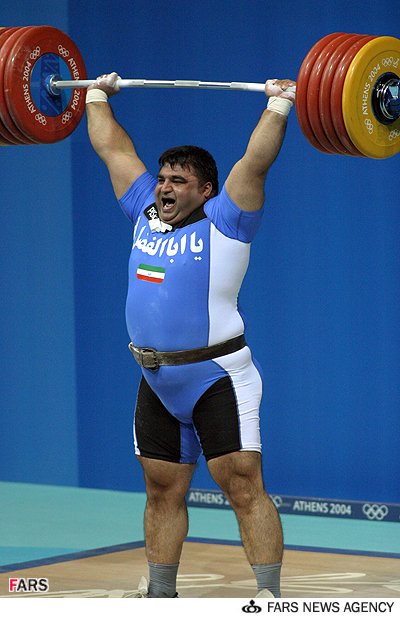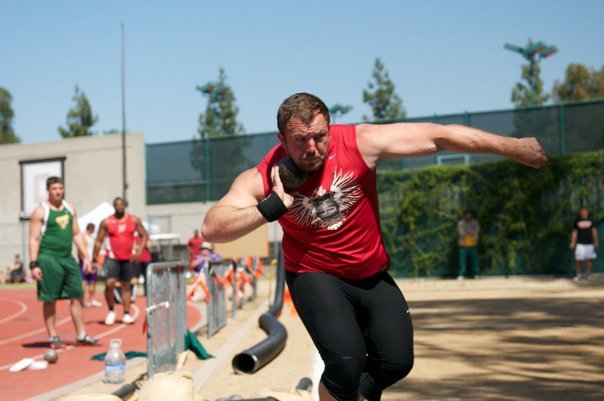Written by Team Juggernaut
By Chad Wesley Smith

The other day I read a great article by G. Martin Bingisser, a national champion hammer thrower from Switzerland, regarding the training concepts of Dr. Anatoli Bondarchuk. For those of you not familiar with Bondarchuk, he is the 1972 Olympic Gold medalist in the hammer throw and served for 16 years as the Soviet national throws coach where he most notably trained Yuri Sedych, the current world record holder in the hammer throw, as well as athletes who won over a dozen Olympic medals and broke 12 world records. Bondarhuk is a legend in the throwing community and has written several great texts about sports training, most notably Transfer of Training. As great as Bondarchuk is, he is largely misunderstood because of the fact that many of his texts are translated from Russian, so many of his most important concepts, like dynamic correspondence, are often misused by American coaches. Bingisser has regular correspondence with Bondarchuk and aims to simplify his ideas in the article Simplifying Bondarchuk.

While most of Bondarchuk’s writing is in regards to the training of throwers (shot, disc, hammer, jav) the concepts could have great applications in other sports. Bondarchuk is a tremendous believer in the importance of special strength, over general strength. Bondarchuk points to how the correlation between general strength (bench, squat, clean and snatch) is very low as athlete’s progress to elite levels in the hammer throw, when compared to special strength exercises like throwing heavy hammers. Bingisser sums this up well in 3 lessons from Bondarchuk; 1-Athletes have limited time and energy, 2-General strength often isn’t the answer and 3-Special strength often is the answer. Let’s look at each of these ideas a bit more in depth…
Athletes Have Limited Time and Energy
Bondarchuk puts a great deal of emphasis on always choosing exercises which will have direct positive correlation to the athlete’s performance, even to the degree that his hammer throwers would never perform pushups, because while not detrimental to their performance, they would only serve to make the athlete tired without improving results.
The idea that athlete’s time and energy is limited is very true and a concept that is reiterated by Charlie Francis in his ‘cup analogy’ which I have written about several times before. Too often sport and strength coaches insist on heaping on more and more training to the athlete but it isn’t really focused in a manner that will help them succeed, rather it is done under the guise of getting the athlete ‘mentally tough’ or more often than not is used as a time filler.
Examine what your athlete’s are doing, in every aspect of their training, and make sure you aren’t filling up their cup with work for work’s sake.
General Strength Often Isn’t the Answer
This is a concept that I ran into in my own training as a thrower, as I achieved great weightroom results, that no longer improved my sport performance. Bondarchuk knows that this is a trap many coaches and athletes fall into because the weightroom offers nearly instant gratification for the young athlete, in terms of performance gain. Bondarchuk though instead decides to invest his and his athletes time in the long results yielded by technical improvement and sport-specific exercises (I use this term cautiously because it is so often bastardized by coaches in the US).
This past weekend after reading this article I was talking with pro MMA fighter Brett Cooper, about the concepts in it and I asked him, “do you think you can deadlift more than almost all other 185 pound class fighter?” Brett who has deadlifted 500 pounds, said yes and I followed by asking “then why would deadlifting more close the gap between you and the UFC champion?”
While improving general strength qualities may make you the best high school football player/wrestler/thrower, it is less likely to have that impact on you at the collegiate level and even less likely again to impact you that way at the professional/elite level. Think about the energy needed to improve an athlete’s (lets say a college offensive lineman) bench press max from 400 to 450 pounds, could that energy be better spent on developing technical skills or on an exercise with a higher degree of transfer like medicine ball throws or Prowler explosions? While I certainly feel that general strength is important and needs to be developed, it cannot come at the expense of more important qualities.
“Focusing on special strength does not mean that an athlete doesn’t need to be ‘strong’ to throw far. Bondarchuk believes a thrower must be strong to throw far. However, he has a different definition of strong. For example, many claim that world record holder Yuri Sedych was not very strong, which is a false claim. Although many throwers have better personal bests in Olympic Lifting than he, he was by no means bad at those lifts. For Bondarchuk, however, the Olympic lifts are not the only measure of strength. Sedych’s strength was concentrated in the more important special exercises. He was stronger than anyone at those exercises. For example, he had a personal best of 70.20m with the heavy 10kg hammer and regularly did plate twists in training holding two or more 25kg plates extended in front of his body.”

Special Strength Often Is the Answer
Special strength is essential to athletic success. Bondarchuk says “We should pay attention to those muscles which are stretched out at the time of the main movement’s performance.” In the example, of hammer throwers, Bondarchuk’s research with 1000s of high level athletes, showed that there was only a 0.196 correlation between the squat and throwing result of 80m (very elite) hammer throwers, meaning that it is almost impossible to predict an elite level throwers success by the amount they can squat. Compare that to a 0.824 correlation (1.0 correlation is perfect) between hammer throw success and results with the 10kg hammer. It is pretty intuitive, that the more similar to the competition an exercise is, the greater transfer of training would be; but this concept becomes much more difficult to apply when the competition isn’t as straightforward as throwing, sprinting or lifting. When a competition is so multi-faceted as football or MMA, the ability to design and measure exercises with high dynamic correspondence is much more difficult. Brett and I tossed around some ideas regarding exercises that would have the highest correspondence to measuring MMA success, like punching with overweight gloves, kicking with overweight shin guards, take downs against larger opponents, etc. Measuring punching force, rate of punching and average force of a combination, as well as the force being applied in a takedown, kick, elbow, etc would be valuable here so you could show correspondence between exercises and competitions like Bondarchuk does with the hammer throw and 10kg hammer throw. The only issue with this is that the diagnostic equipment needed to measure these types of effort is either very expensive or doesn’t really exist, but with that being said it doesn’t mean that you still shouldn’t perform these special strength exercises, even if you don’t have any perfect way to measure your progress on them.
Here are some example of special strength exercises for various sports that while maybe difficult to measure, will have a high transfer to the athlete’s performance…
Football (Linemen)-Prowler Explosions, Diving Medicine Ball Throw Variations, Sled Pushes for 5-10 yds
MMA-Punching with heavy gloves or weight in hands, Resisted Takedowns (either with bands or a weight vest), Takedowns or Escapes against larger opponent
Baseball-Various MB Throws, Over/Underweight Ball Throws (ball weight selection is critical, check out Eric Cressey’s website for more info on this), Over/Underweight Bat Swings, Winds with Hammer/Medball on Rope
This is a very big concept and has a lot of ideas to think about. I’ll definitely be writing more about it over the next weeks/months. For now though, I’ll leave you with this quote from Bingisser, “There is a high correlation (to hammer throwing success) from throwing different types of hammers. However, many coaches overlook this by thinking of throwing as merely a means to develop technique. Runners, on the other hand, don’t think of running as a way to just develop technique. To them, it is also a way for them to build endurance, strength and other qualities needed to succeed. And, while cycling develops leg muscles and improves the cardiovascular and respiratory systems, few runners would argue that the majority of training time should be spent on a bike; though similar in nature, cycling does not transfer as well to running.” Why aren’t more sports and strength coaches, using sporting movements at varying intensities and loads to develop the special strength that will have the highest correspondence to their athletes success?





